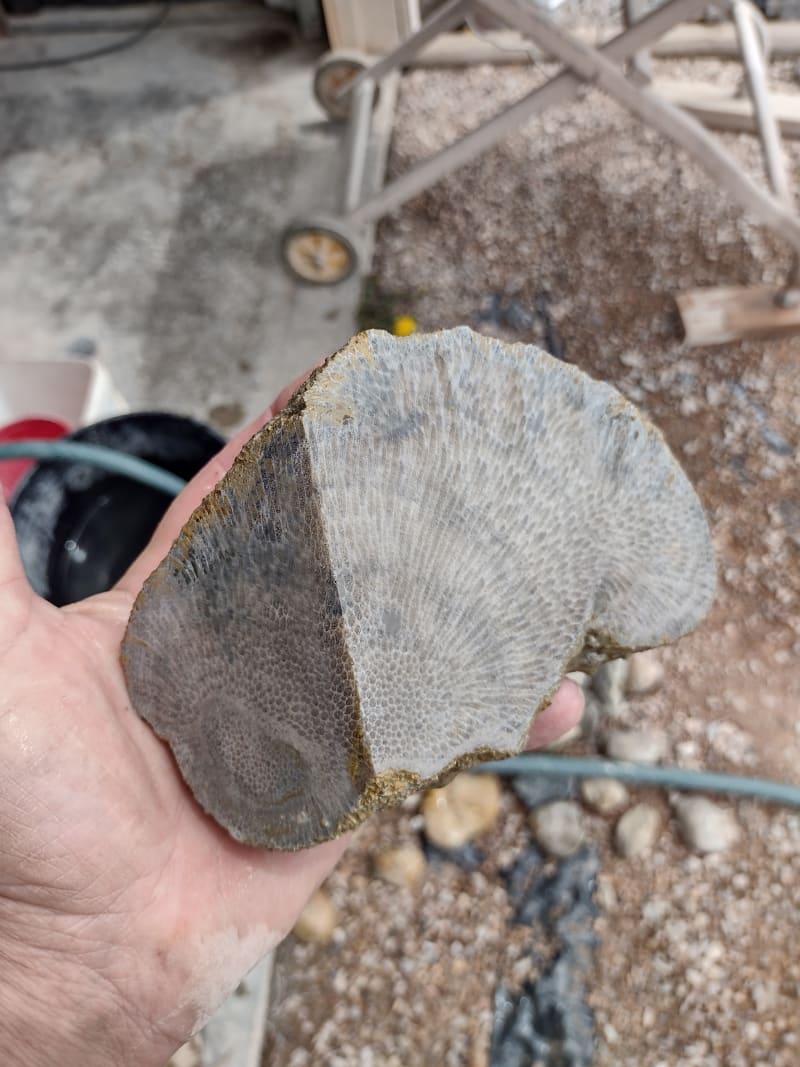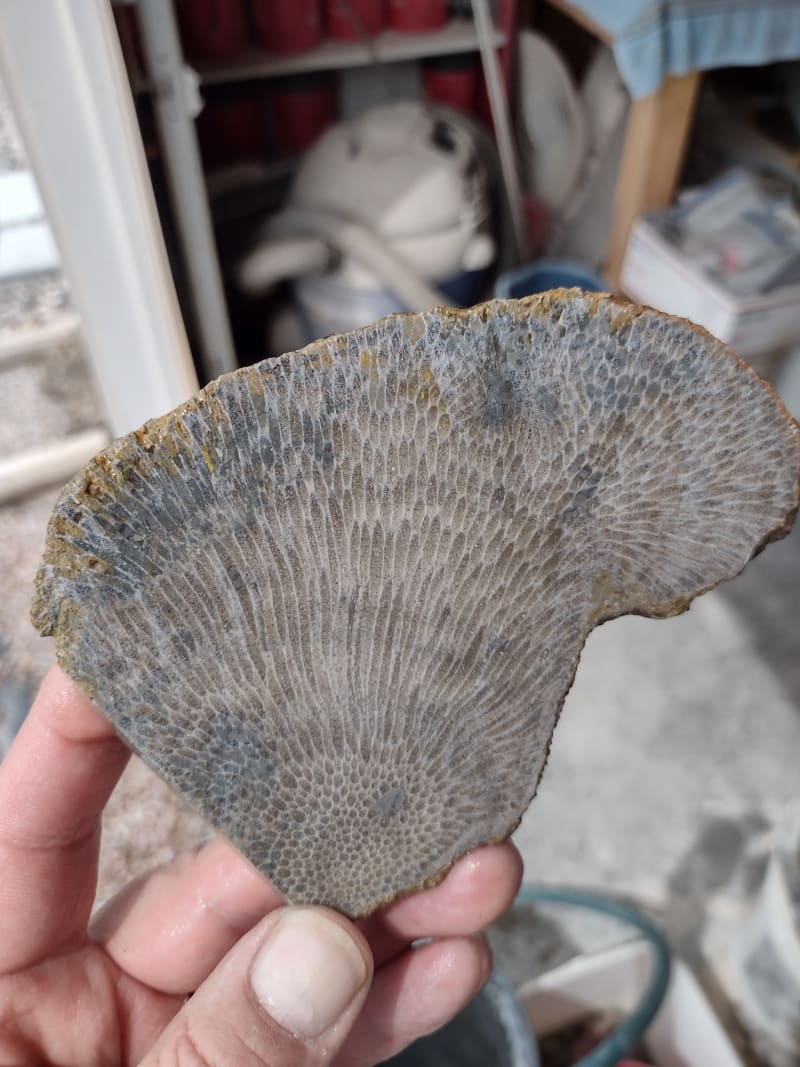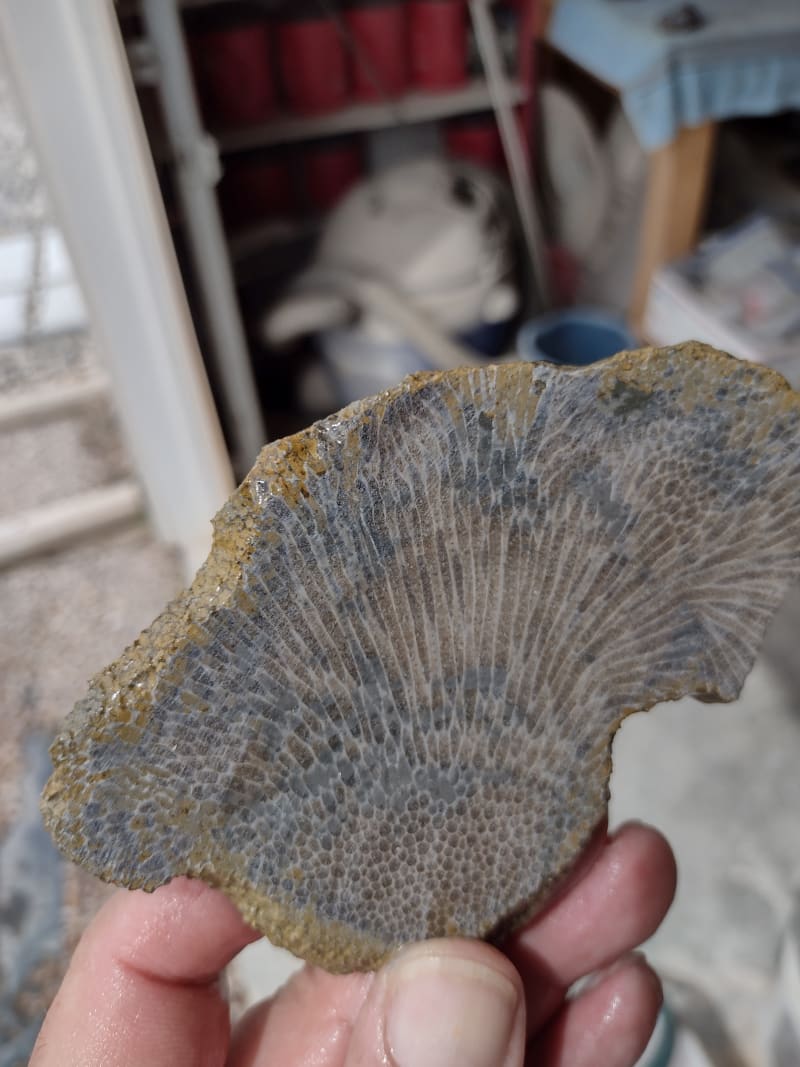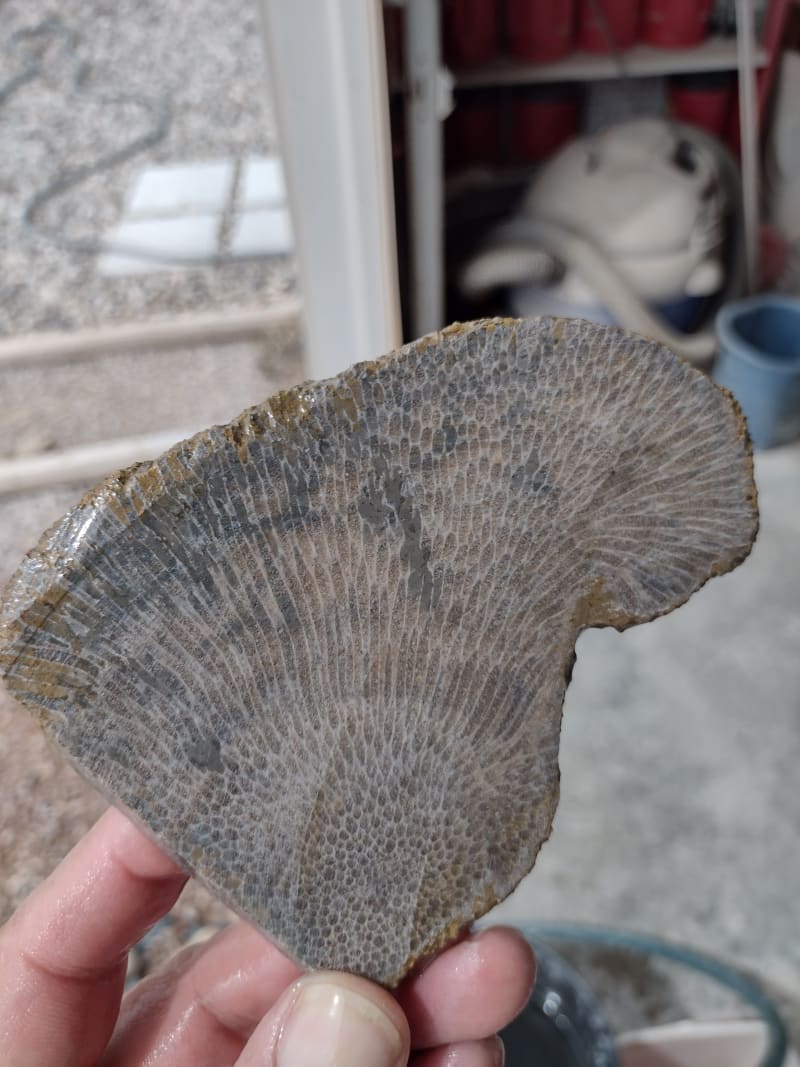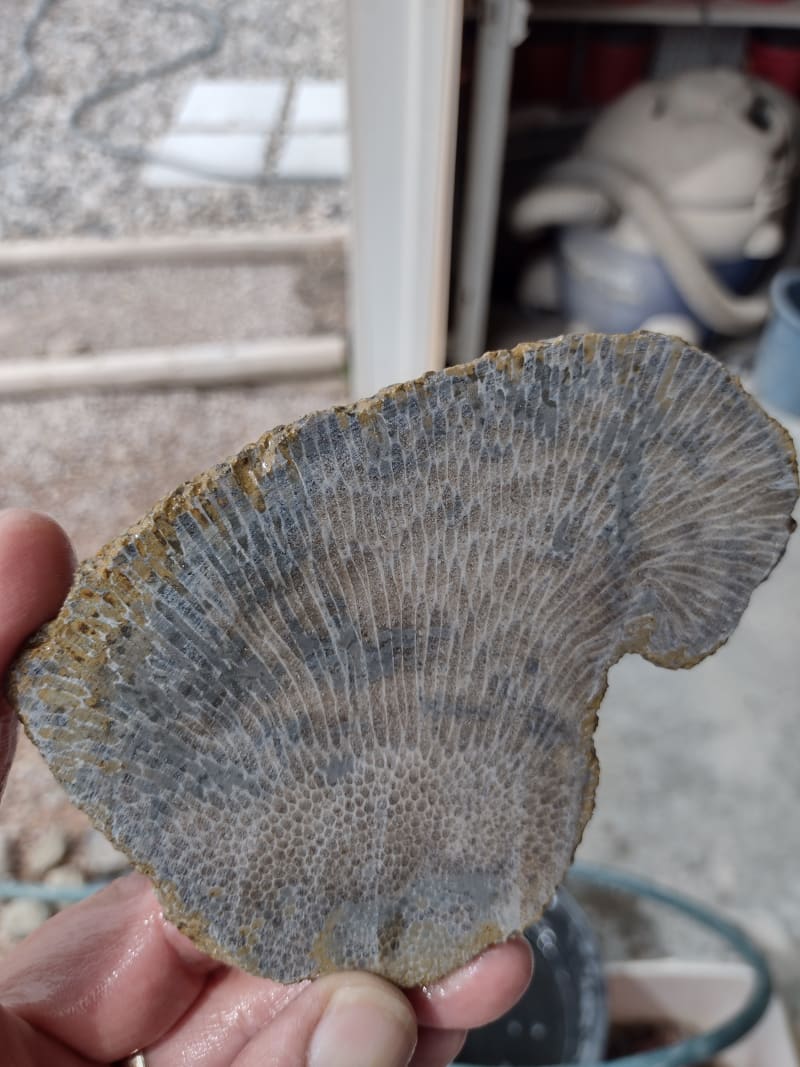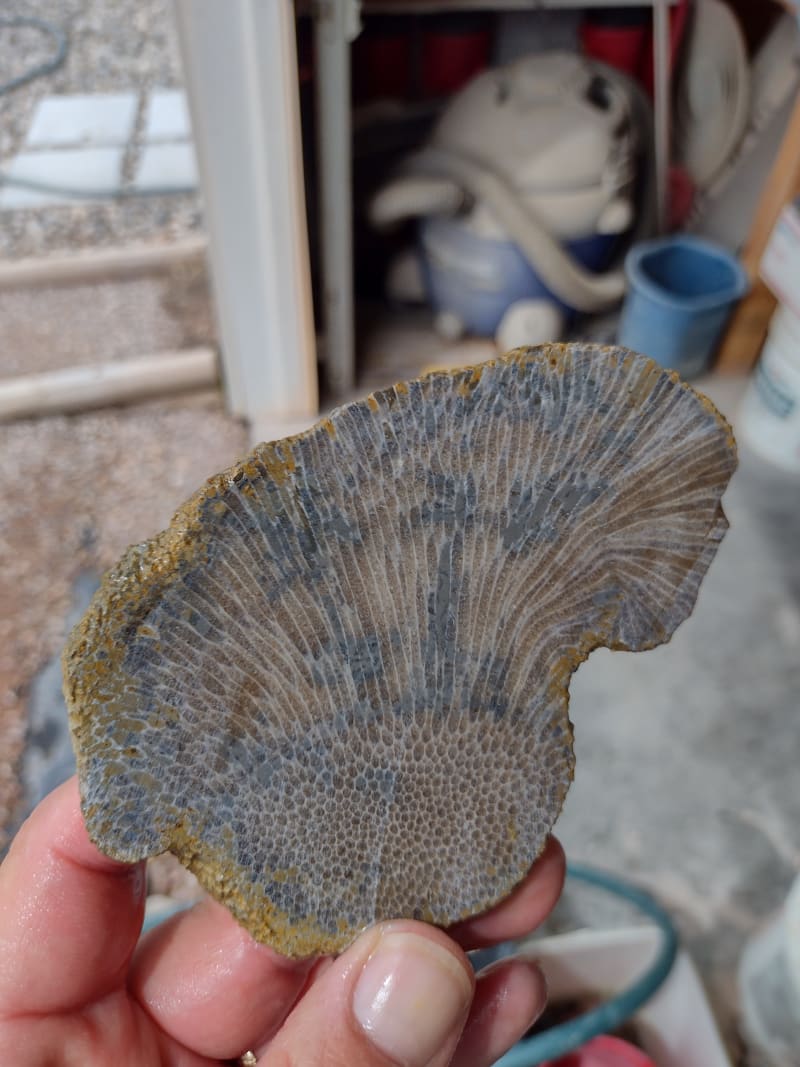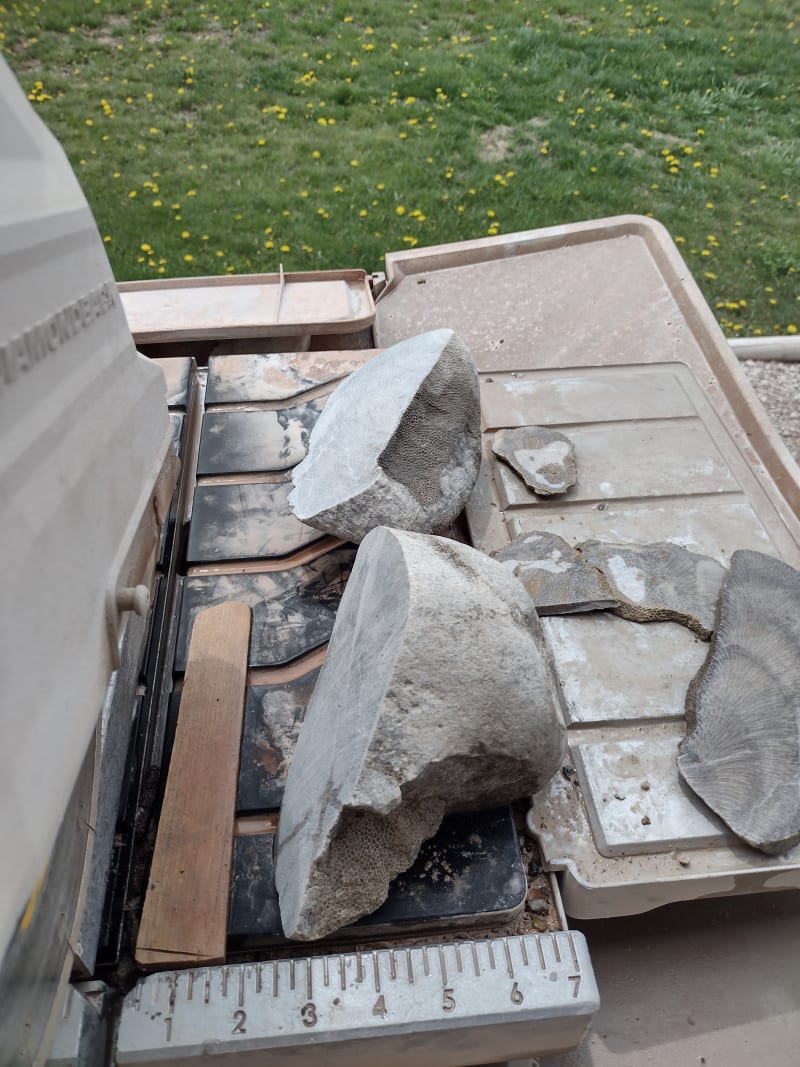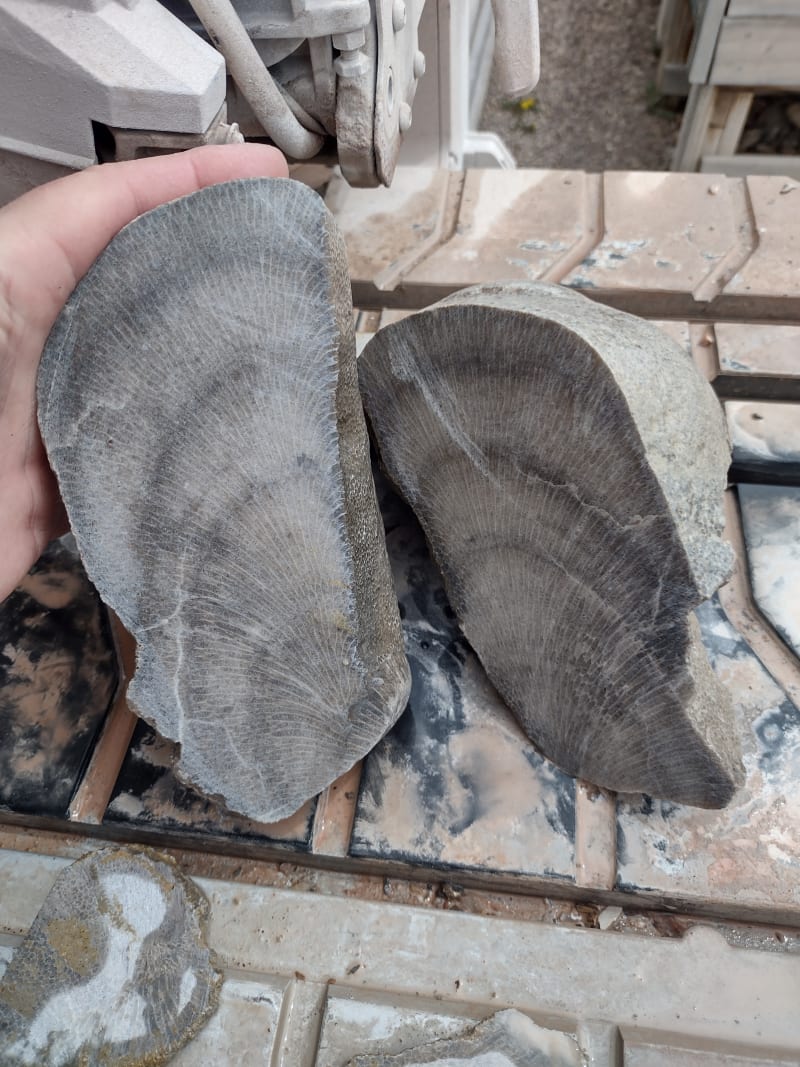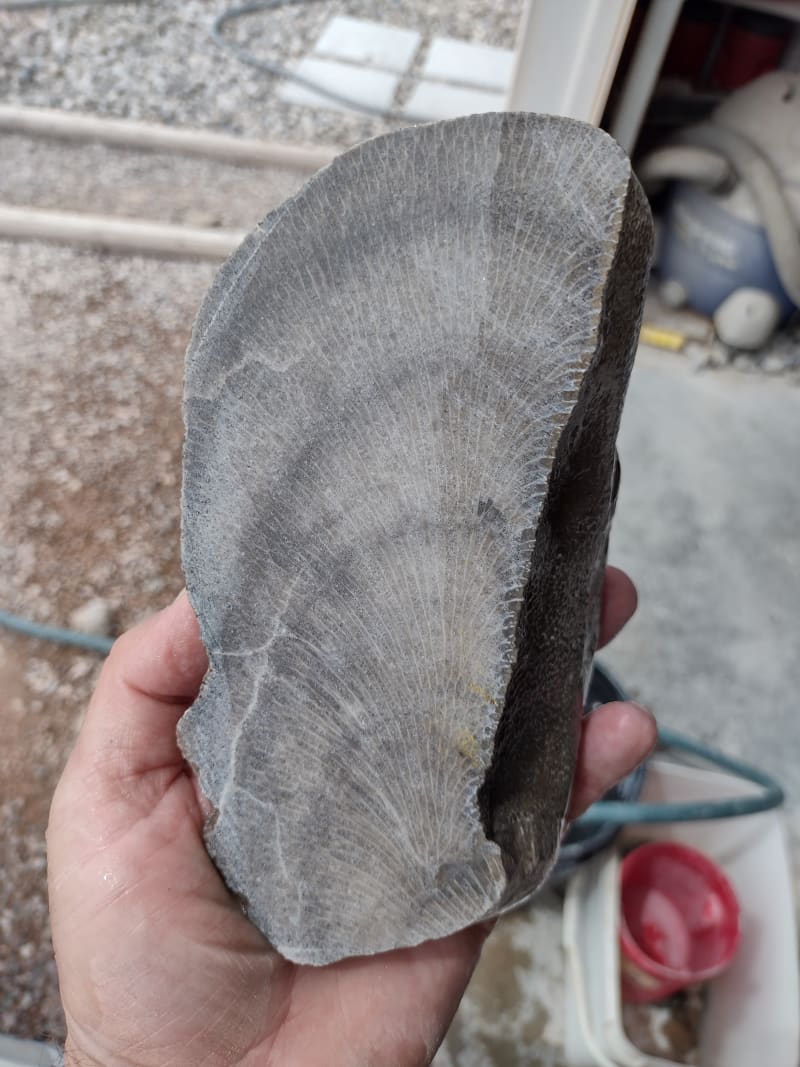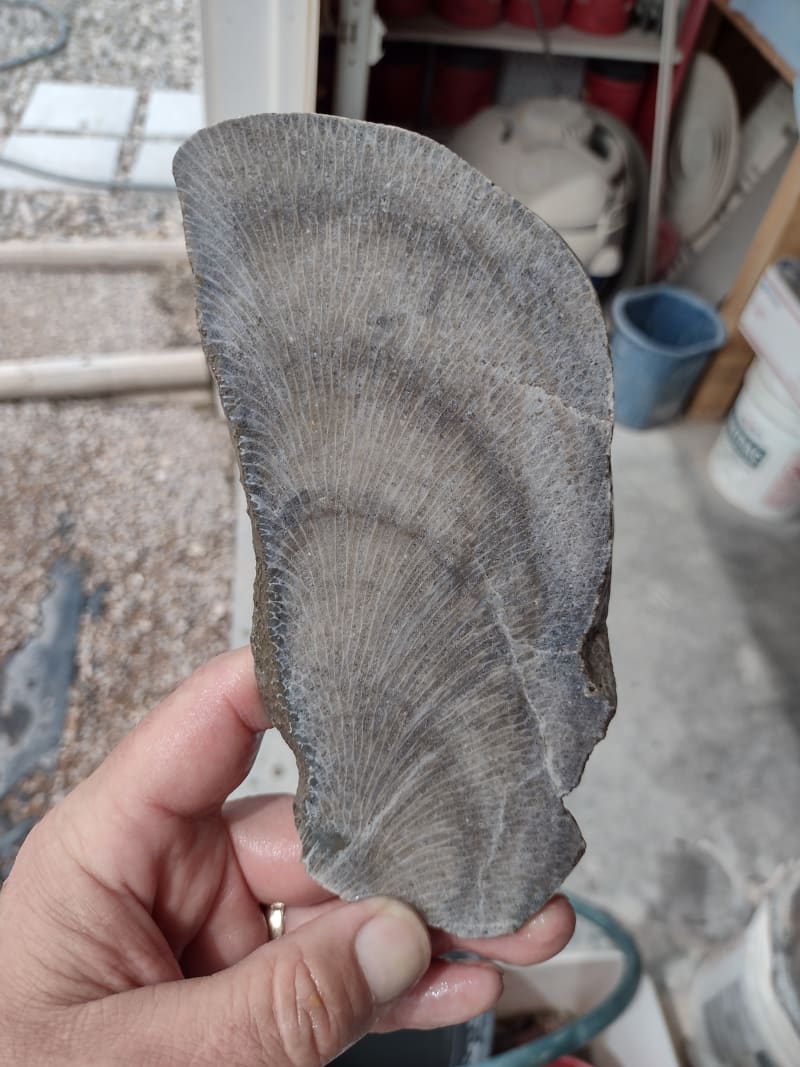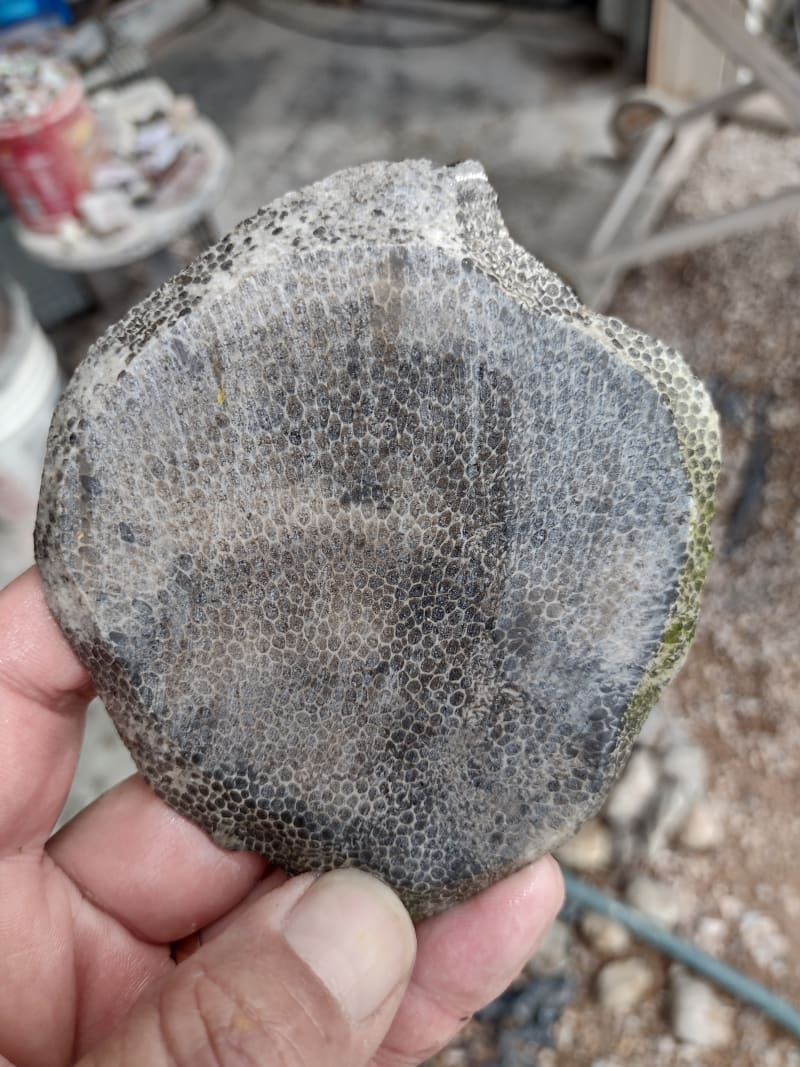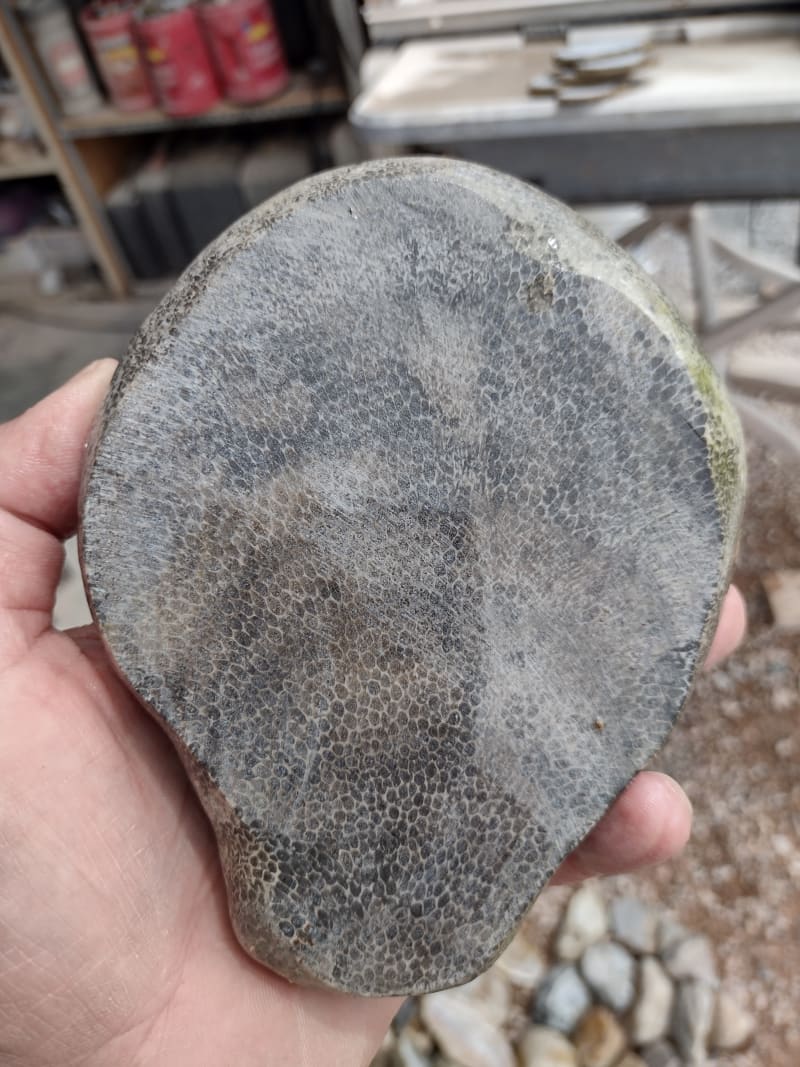|
|
Post by jasoninsd on May 5, 2024 13:52:50 GMT -5
|
|
|
|
Post by Pat on May 5, 2024 14:15:32 GMT -5
I can see why you like it!
And I learned something!
Thanks to both of you!
|
|
|
|
Post by chris1956 on May 5, 2024 14:52:04 GMT -5
How could that thrid one not have a fan pattern? It looked like the perfect fan to start with! I think Rob found the really big one (second one) but offered it to me because I said I was looking for some to send to you. They look like they are pretty solid except for the few cracks in the big one but I think you have enough material to work around those.  |
|
|
|
Post by Jugglerguy on May 5, 2024 15:17:18 GMT -5
Thanks for posting pictures, Jason. Chris and I were keeping an eye out for a good on for you all day. There's quite a bit of that there, but the quality appears to vary quite a bit. It's fun to see what you found inside.
|
|
|
|
Post by rockjunquie on May 5, 2024 15:40:53 GMT -5
Those are awesome cuts!! I can see the cabs now.  It reminds me of Pet. Bryozoan. |
|
gemfeller
Cave Dweller 
Member since June 2011
Posts: 4,059 
|
Post by gemfeller on May 5, 2024 16:26:33 GMT -5
New to me and absolutely stunning! What is the replacement mineral? It doesn't look like quartz.
|
|
RWA3006
Cave Dweller 
Member since March 2009
Posts: 4,625 
|
Post by RWA3006 on May 5, 2024 16:41:47 GMT -5
Is this related to Petosky stone?
|
|
|
|
Post by Jugglerguy on May 5, 2024 17:00:36 GMT -5
Is this related to Petosky stone? Yes, they're both fossilized corals from the Devonian Period. |
|
|
|
Post by chris1956 on May 5, 2024 17:02:49 GMT -5
New to me and absolutely stunning! What is the replacement mineral? It doesn't look like quartz. Jason is probably waiting for me to answer these so I will try. Feel free to correct me if I am wrong Fossilman. I didn't see a lot of references for Charlevoix Stones (Favosites) although some of them referenced sedimentary mudstone. To me the Charlevoix stones "look" similar in composition to Petoskey Stones. Most references I looked at say that Petoskey Stones are mostly calcium carbonate (calcite). Some refer to them as limestone although I suspect the fossilized parts have a lot more calcite than typical limestone which would make sense because Petoskey Stones mostly polish better than plain limestone. Also explains why they (both Petoskey and Charlevoix stones) are soft. The "mud" that I refer to in Petoskey stones I think is probably plain limestone that filled in areas of the Petoskey stones and doesn't polish well. Is this related to Petosky stone? Different types of fossilized corals that grew in the same general area about the same time (350 million years ago). I don't know the extent but I have found Charlevoix Stones from Charlevoix to Petoskey. |
|
|
|
Post by jasoninsd on May 5, 2024 17:43:07 GMT -5
I can see why you like it! And I learned something! Thanks to both of you! Thanks Pat!  I just finished cutting a few preforms out of one of the slabs. Those will be the "test subjects" for future pieces! LOL How could that thrid one not have a fan pattern? It looked like the perfect fan to start with! I think Rob found the really big one (second one) but offered it to me because I said I was looking for some to send to you. They look like they are pretty solid except for the few cracks in the big one but I think you have enough material to work around those.  I know, right?!? I thought that 3rd one was a no-brainer...and yet...surprise! LOL I really can't thank you enough for thinking of me and being willing to send these to me to "play" with! I'm stoked to see how they work. I might just take one of the end cuts to the wheels to see what might happen. Thanks for posting pictures, Jason. Chris and I were keeping an eye out for a good on for you all day. There's quite a bit of that there, but the quality appears to vary quite a bit. It's fun to see what you found inside. I'm echoing the above...I can't thank you two enough for doing this!  We'll see what happens with these. One of the Petoskey Stones you gave me when you were here sits on the counter above my desk at work. It polished fantastically well...and EVERYONE comments on it!!  Those are awesome cuts!! I can see the cabs now.  It reminds me of Pet. Bryozoan. Thanks Tela!  I'm a bit excited to see how the cabs turn out. I did one of my "normal" but abnormal shapes I do...and the other is a shield. Stoked about both of them!  New to me and absolutely stunning! What is the replacement mineral? It doesn't look like quartz. Thanks Rick!  "See below" LOL Is this related to Petosky stone? Also "see below"! LOL New to me and absolutely stunning! What is the replacement mineral? It doesn't look like quartz. Jason is probably waiting for me to answer these so I will try. Feel free to correct me if I am wrong Fossilman . I didn't see a lot of references for Charlevoix Stones (Favosites) although some of them referenced sedimentary mudstone. To me the Charlevoix stones "look" similar in composition to Petoskey Stones. Most references I looked at say that Petoskey Stones are mostly calcium carbonate (calcite). Some refer to them as limestone although I suspect the fossilized parts have a lot more calcite than typical limestone which would make sense because Petoskey Stones mostly polish better than plain limestone. Also explains why they (both Petoskey and Charlevoix stones) are soft. The "mud" that I refer to in Petoskey stones I think is probably plain limestone that filled in areas of the Petoskey stones and doesn't polish well. Is this related to Petosky stone? Different types of fossilized corals that grew in the same general area about the same time (350 million years ago). I don't know the extent but I have found Charlevoix Stones from Charlevoix to Petoskey. I was actually still out on the saws...so wasn't purposely waiting for you to respond. However, I would have tagged you for the answers on these anyway because I wouldn't have had a clue on Rick's question! LOL |
|
gemfeller
Cave Dweller 
Member since June 2011
Posts: 4,059 
|
Post by gemfeller on May 5, 2024 18:13:25 GMT -5
chris1956 and jasoninsd I figured calcite or something similar. I Googled but didn't find a precise answer. Thanks both.
|
|
|
|
Post by jasoninsd on May 5, 2024 18:31:54 GMT -5
chris1956 and jasoninsd I figured calcite or something similar. I Googled but didn't find a precise answer. Thanks both. You don't have to thank me...I "deferred"! LOL I could tell cutting these, they were similar to Petoskey Stones...or Stromatolite...or even Turritella Agate. They all have a "mud" like consistency to them... |
|
khara
fully equipped rock polisher
  
Member since September 2022
Posts: 1,979
|
Post by khara on May 5, 2024 21:35:03 GMT -5
I really like these. I especially like where there are round formations and then they begin to fan out. It’s really neat those slabs capture both. I don’t think I’d ever heard the name charlevoix before. So, it sort of seems to me the fan pattern is due to the coral formations being worn or cut at an angle and then also where they grew upright and then turned and laid down. And because they changed directions as they grew it’s kind of just luck if we can find a formation that has both the round/tube and the laid down fans visible(?) Really cool. Those faced rough and some slabs would be great as display pieces and then also some cabs made would be a really neat way to show it all off. Here is a 3D model of a Charlevoix fossil: umorf.ummp.lsa.umich.edu/wp/wp-content/3d/viewerMob.html?name=1427&extension=ctm |
|
|
|
Post by jasoninsd on May 5, 2024 21:40:55 GMT -5
I really like these. I especially like where there are round formations and then they begin to fan out. It’s really neat those slabs capture both. I don’t think I’d ever heard the name charlevoix before. So, it sort of seems to me the fan pattern is due to the coral formations being worn or cut at an angle and then also where they grew upright and then turned and laid down. And because they changed directions as they grew it’s kind of just luck if we can find a formation that has both the round/tube and the laid down fans visible(?) Really cool. Those faced rough and some slabs would be great as display pieces and then also some cabs made would be a really neat way to show it all off. Here is a 3D model of a Charlevoix fossil: umorf.ummp.lsa.umich.edu/wp/wp-content/3d/viewerMob.html?name=1427&extension=ctmThat's an awesome 3D model! Thanks for posting that link!  It was fun studying the pieces to see if I could figure out where to take the slices! *I think Charlevoix is a fun word to say! LOL - It just sounds "regal" to me!  Here's a picture of a piece chris1956 has:  |
|
khara
fully equipped rock polisher
  
Member since September 2022
Posts: 1,979
|
Post by khara on May 6, 2024 0:46:30 GMT -5
|
|
|
|
Post by Peruano on May 6, 2024 6:50:13 GMT -5
Now that is a cool way to visually depict the speciman. Alas not available or appropriate for every stone though. |
|
|
|
Post by Peruano on May 6, 2024 6:52:27 GMT -5
What's not to like about those patterns. They will produce unique cab opportunities.
|
|
|
|
Post by Jugglerguy on May 6, 2024 8:47:50 GMT -5
Here's a video I made showing a Charlevoix stone I slabbed. You can see how it changes from one slab to the next.
|
|
rockbrain
Cave Dweller 
Member since January 2022
Posts: 3,167
|
Post by rockbrain on May 6, 2024 9:07:31 GMT -5
Those are sweet! And big!
|
|
|
|
Post by miket on May 6, 2024 15:14:15 GMT -5
Pretty sweet, should make some nice cabs!
|
|



